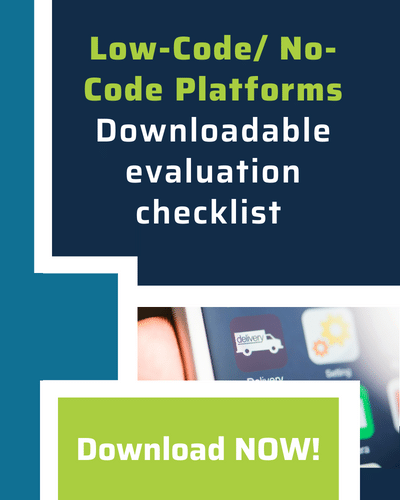In order to facilitate daily business processes, many corporations rely on Enterprise Resource Planning (ERP) software to manage data and more. ERP applications automate and optimize a variety of operational business processes, solving unique business needs that would otherwise be completely manual. But with advancements in technology in the new millennium, many ERP systems adopted by companies are outdated and need modernization to comply with new digital requirements.
But what is ERP?
Before diving into modernization solutions such as EdgeReady Cloud, the history of ERP software will be outlined, along with the definition of enterprise resource planning and how SaaS solutions can further optimize it.
History of ERP Software
Where It All Began
This may be an unknown fact to some, but the history of ERP software goes back more than 100 years. In 1913, engineer Ford Whitman invented what became known as the economic order quantity (EOQ) model, a paper-based manufacturing system for production scheduling. For decades, EOQ was the standard for manufacturing. However, that all changed in 1964 when toolmaker Black and Decker became the first company to adopt a material requirements planning (MRP) solution that combined EOQ concepts with a mainframe computer. MRP then became the manufacturing standard until manufacturing resource planning (MRP II) was developed in 1983.
MRP II featured modules as a key software architectural component, and integrated core manufacturing components including purchasing, bills of materials, scheduling, and contract management. For the first time, different manufacturing tasks were integrated into a common system. This type of updated system solved many challenges that companies in the manufacturing industry had been facing such as slowed production, manual inventory lookup and delivery processes. MRP II boosted operational efficiency with better production planning and reduced inventory. As technology continued to emerge in the 1970s and 1980s, concepts similar to MRP II were developed to handle business activities outside of just the manufacturing industry, incorporating finance, customer relationship management, and human resources data.
The Official Introduction of Enterprise Resource Planning
In 1990, Gartner officially coined the term enterprise resource planning as the name of business management software that could be used across different industries. ERP software was created with the need to innovate the way companies process data within their financial, customer relationship management (CRM) and human resource systems. Through the adoption of ERP software, corporations can more easily boost productivity and gain visibility and reporting functionalities through the digitization and automation of manual or paper-driven processes.
But what does modern-day ERP software look like and what companies typically use it?
Modern ERP Software and Who Uses It
Today, Enterprise Resource Planning platforms refer to the kind of software that corporations use to manage day-to-day business activities such as inventory and order management, accounting, human resources, customer relationship management (CRM), and beyond. Typically made of a ‘suite’ of applications, ERP software is used by a company to collect, store, manage, and interpret all of the data that is produced from business activities. These business activities are commonly found in finance, HR, distribution, manufacturing, service and the supply chain.
Because ERP software helps to manage data in various different business activities for a corporation, it’s extremely valuable for a range of industries. Examples of industries that commonly use ERP software include manufacturing, distribution, oil and gas, logistics, construction, agriculture, healthcare, and more.
Below are some key benefits of using ERP software in your business:
- Gives visibility into real-time data, offering companies the ability to address concerns proactively and make improvements when necessary
- Improves financial compliance with regulatory requirements and reduces risk
- Automates crucial business processes such as procure-to-pay processes
These benefits are further optimized when adding Software-as-a-Service (SaaS) solutions into the mix. SaaS solutions, otherwise referred to as cloud computing, offer a delivery model for ERP that makes ERP software more affordable and the software easier to implement and manage. One SaaS solution, EdgeReady Cloud, achieves this and more.
Optimize ERP Software with EdgeReady Cloud
EdgeReady Cloud is a low-code, rapid application development platform that helps companies build scalable and resilient applications with little-to-no programming. EdgeReady applications are hosted as SaaS applications, and contain pre-built features with a drag-n-drop interface as well as patented offline capabilities that enable data accuracy in any connectivity landscape.
Perhaps the most advantageous feature of EdgeReady Cloud for ERP customers is that it meets the modernization requirements of any ERP system or database. This not only transforms your ERP software but completely innovates it, enabling your corporation to meet demand for digital services. Additionally, it already has initial infrastructure and basic controls built out. This is impactful because many ERP systems create a pretty large dent in the budget when having to pay for operational overhead or task members of your team with deployment and maintenance work. EdgeReady Cloud enables your employees to focus on productive areas of the business and elevates the value of your ERP software in the long-run.
Below is a quick overview of how EdgeReady Cloud optimizes ERP Software:
- Automation of data input procedures
- Modernization of legacy application processes
- Increasing speed-to-market of new applications
- Extending internal systems to the edge
- Maximizing technology spend
- Efficient business productivity
- Connectivity in any landscape
Modernize any ERP system with EdgeReady Cloud. Build unlimited apps for free today - Contact our team to learn more.




 Back
Back/Logo%20-%20black%20text%20blue%20pillar%20(large)-1.jpg)

